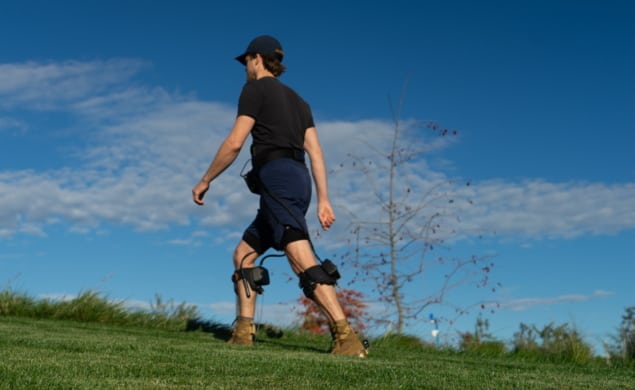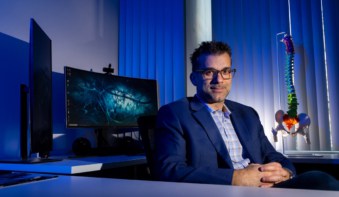
Wearable robotic systems have great potential for assisting locomotion during clinical rehabilitation, as well as use in recreation and to ease demanding occupational tasks. Walking patterns, however, vary according to a person’s age, height and physiology, may be affected by neural or muscular disorders, and change in different environments. As such, there’s a need for wearable robotics that can customize walking assistance to each user and task.
To address this need, researchers at Harvard University have developed a novel robotic ankle exosuit that uses ultrasound measurements recorded during walking to tune the level of assistance to an individual’s own muscle dynamics and walking task. The team – from Robert Howe’s Harvard Biorobotics Laboratory and the Harvard Biodesign Lab run by Conor Walsh – describes this new muscle-based assistance (MBA) strategy in Science Robotics.
The researchers predict that such personalized assistance should improve exosuit performance and support the adoption of wearable robotics in real-world, dynamic locomotor tasks. “By measuring the muscle directly, we can work more intuitively with the person using the exosuit,” explains co-first author Sangjun Lee in a press statement. “With this approach, the exosuit isn’t overpowering the wearer, it’s working co-operatively with them.”
Personalized assistance profiles
The researchers tested their MBA strategy on nine healthy adults. To calibrate the exosuit assistance level, they first recorded the baseline dynamics of each individual’s soleus muscle (one of the large muscles in the calf) while they walked on a treadmill (without wearing a device) at multiple speeds as well as at a 10% incline.
A portable ultrasound system strapped to participants’ calves measured the muscle dynamics as they walked, capturing continuous B-mode ultrasound images of the soleus muscle. For each participant and task, the researchers used these images to estimate the force produced by the muscle, with the system only needing a few seconds of walking to determine the muscle profile. They then designed the exosuit’s assistance profile to be proportional to that estimated force, generating individualized, task-specific MBA profiles.
After a training session, participants performed walking tasks with the ankle exosuit applying assistive force according to their individual MBA profiles. Compared with not wearing a device, the bilateral ankle exosuit reduced users’ metabolic expenditure by an average of 15.9%, 9.7% and 8.9%, for level walking at 1.25, 1.5 and 1.75 m/s, respectively, and by 7.8% when walking at 1.25 m/s on the incline.

How can powered exoskeletons restore walking ability after stroke?
The team notes that these metabolic energy benefits were achieved while applying less assistive force than previously reported assistance strategies. This ability to provide assistance using relatively low forces has implications for future exosuit design, enabling the use of smaller and lighter power sources and actuators, which further decreases loading while increasing the user’s comfort.
Finally, the researchers performed a proof-of-concept real-world demonstration of online adaptive assistance by a mobile ankle exosuit. When tested in variable-speed, outdoor walking situations, the exosuit could quickly adapt to changes in walking speed and incline. In future work, the team aims to improve estimation methods and closed-loop controllers to enable real-time dynamic control for real-world tasks.



